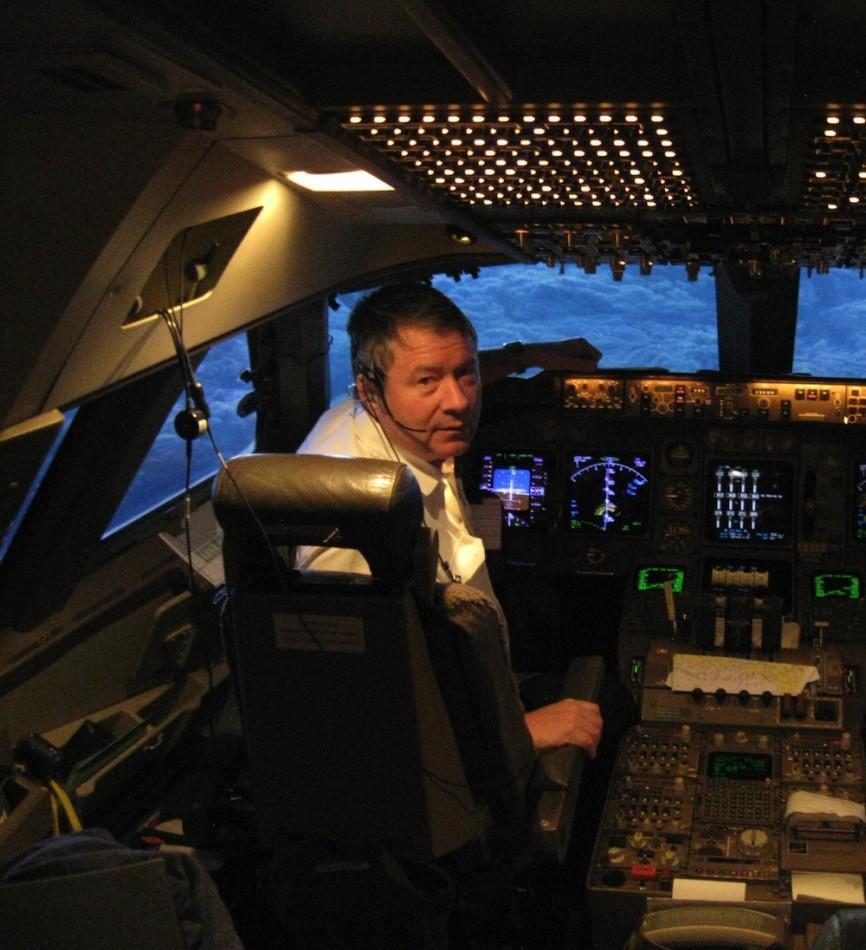Q&A: A Veteran Pilot’s Take on the Mystery of MH370
April 4, 2014
Capt. Harlan Davis is currently a Senior Pilot for United Airlines. He has flown almost all Boeing aircraft including the 777 for almost 40 years, including many routes in the East in the same airspace where Flight MH370 disappeared.
Shay Lari-Hosain What is your theory on what happened to the Malaysia Airlines flight?
Harlan Davis We know for sure that the airplane was carrying a significant amount of lithium ion batteries. Here’s my best guess, and theory is being generous; it’s more of an educated guess than anything else. Something catastrophic happened; could it be these batteries on board that were improperly packed? Yeah. I’ve flown the 777 for about a year; the E&E compartment as it’s known is located below the flight deck, and it’s where all the actual equipment is located. If [a] fire worked its way forward from the cargo compartment, it could have very quickly done serious damage cutting off power supply to the transponder.
Now, when you get a fire on an airplane, you pretty much [have] about anywhere between 15 but no more than 30 minutes to get it on the ground or get it in the water, or you’re a goner. Fires on airplanes are a horrible, horrible thing. There are too many items, insulation, seat covers, plastic bulkheads that burn violently and quickly. The fumes from this stuff are almost always toxic, and if the oxygen system wasn’t working right, there’s no way anybody could survive that.
I’ve flown through that same airspace in a 747 numerous times. There is a piece of that airspace which is not under radar coverage; it’s just too far out in the ocean. Now, it’s likely that some radars were picking them up, but who and what and to what extend that information will be made public is anybody’s guess. If some spy agency had radar coverage on them, the last thing they’d want to do is admit it.
It looks like they did what we call a ‘high dive,’ a rapid descent from altitude to get down to 12,000 feet, so that they could depressurize the cabin completely and blow the cabin out. If there was a lot of smoke in the cabin they may have done just that, set the autopilot on a heading basis or set it to go directly to a particular waypoint or airport. If [the pilots] were overcome by the smoke, once the autopilot reaches that point, it maintains its altitude and heading. And that altitude and heading would’ve taken [the plane] out into the south Indian Ocean.
[They] would’ve put maybe eight hours of fuel on the airplane for their six hour flight. Given that airplane was last radar tracked at 12,000 feet, [the aircraft was] burning about double the fuel per unit of distance than they would have at altitude [35,000 feet]. That would have given them a range of about 1500 miles.
The new search area mysteriously was chosen [on March 28], and that’s where the airplane would have flown before it ran out of fuel. This whole business of shifting the search area for Malaysia 370 is probably the result of some super secret spy agency quietly leaking information to somebody who promised to hold the secret.
The problem with that part of the Indian Ocean, is not only is it deep, but the terrain down below is extremely mountainous. The currents around Antarctica and especially that part of the southern Indian Ocean are so incredibly remote; they are thousands of miles away from any speck of land.
SL So what different types of equipment are on board an aircraft for conveying location data?
HD [On most flights such as Malaysia 370], there’s nothing at all on an airplane that sends out where it was. The only way you knew where an airplane was, was by receiving the transponder reply, which is a series of four sets of three bits. Transponders send back a code which [a] computer immediately [identifies], plots on the screen, and keeps up with the location of the response in real-time. Pinged multiple times, you’ll get real-time altitude and real-time identification readouts. And that’s how radar has been for the last fifty years.
The media refers to the flight data recorder and cockpit voice recorder as ‘black boxes.’ They’re not; they’re orange and they sit back in the rear end of the fuselage. They have a battery on them that sends out a radio signal for about 30 days; and we are coming up real close to that 30 day mark, with about a week left [to find it]. If [the search teams] don’t get within a mile of the wreckage, they will never hear those pings.
SL So I know a lot of people are asking, how is it possible that not a single passenger on the Malaysia Airlines flight ever used their cellphone to make a call?
HD Cellphone antennas are ground-wave only; if you’ve got a cellphone on, the ability for a cellphone above about 2500 feet to pick up a ground-based signal is pretty much nil. They simply are incapable of doing it. For some reason, most people think you can use a cellphone at 35,000 feet. That far out at sea, even if you were down at the appropriate altitude, you’d never pick up a cellphone signal. And that’s something a lot of people don’t understand. When these pilots made this abrupt, almost U-turn, they were a hundred miles from any landmass, so there was no way any consumer equipment could possibly have connected to anything on the ground.
